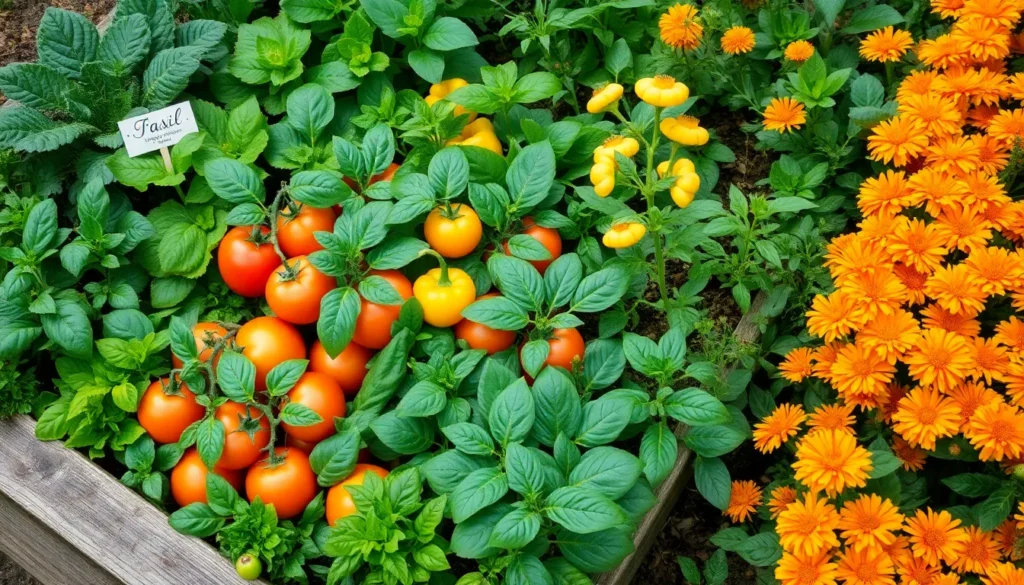Gardening offers a delightful blend of tranquility and triumph, but nothing dampens the joy of nurturing your green sanctuary more than the unwelcome arrival of pests. Whether you’re just planting your first seeds or have years of dirt under your fingernails, understanding how to protect your garden from these tiny invaders is vital to ensuring your plants thrive. Pests can quickly turn a promising season into a gardener’s nightmare, and tackling them with confidence and know-how makes all the difference.
In this guide, you’ll discover practical strategies to keep your garden flourishing and free from unwanted guests. From natural deterrents to preventive measures, we’ll explore a range of methods that suit both beginners and experienced gardeners alike. By the end of this article, you’ll be well-equipped to safeguard your plants, promoting a healthy ecosystem that minimizes the need for aggressive interventions. Let’s journey together toward a pest-free garden, where every blossom and leaf is a testament to your attentive care and growing expertise.
Identify Common Garden Pests
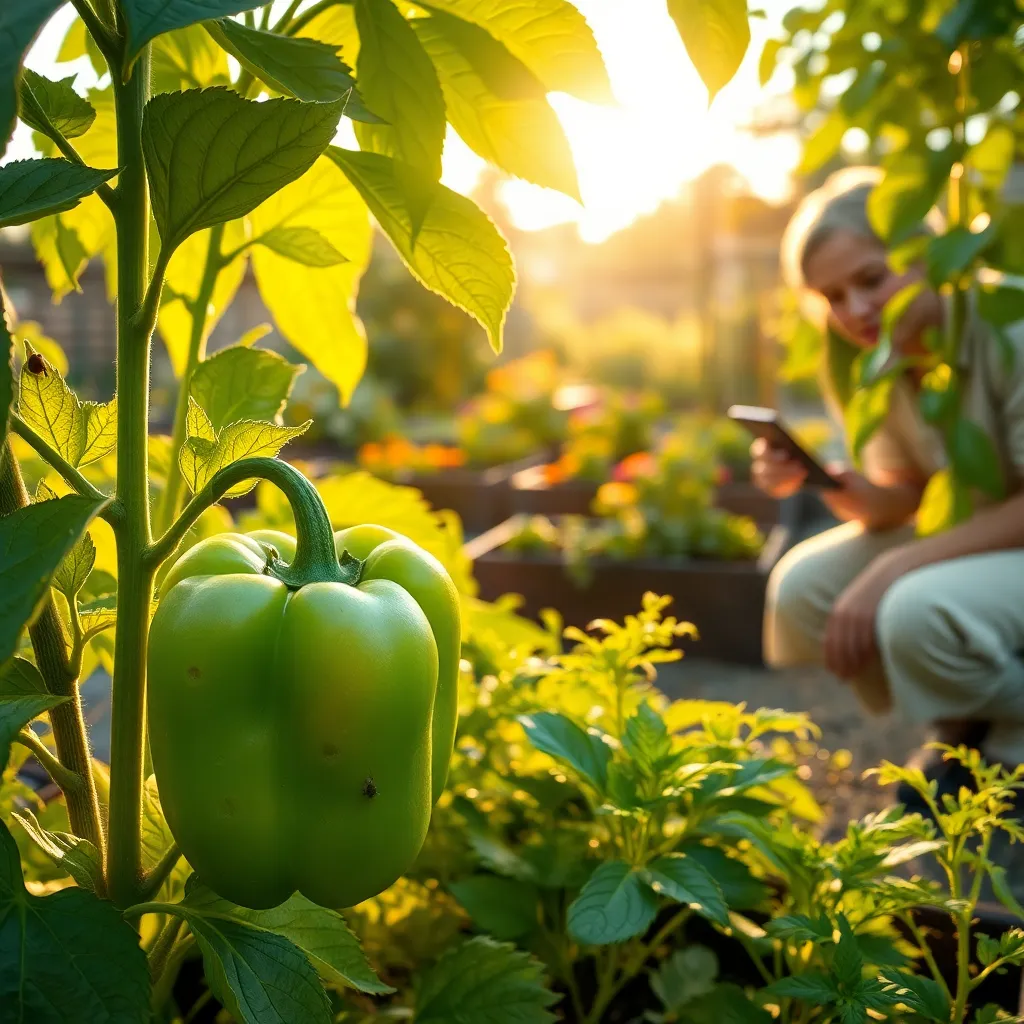
One of the most common garden pests is the aphid, which can be identified by their small, pear-shaped bodies and tendency to cluster on the undersides of leaves. These insects can be managed by spraying plants with a strong stream of water to dislodge them or using insecticidal soap for more persistent infestations.
Slug and snail damage is often characterized by irregular holes in plant leaves and a shiny trail of slime. To control them, gardeners can place copper tape around beds or use organic slug pellets as a deterrent.
Caterpillars are another frequent garden invader, known for their voracious appetite for leaves. Handpicking them off plants at dusk or dawn is effective, and introducing natural predators like birds can help keep their numbers in check.
Spider mites are tiny pests that can cause stippling on leaves and webbing between stems. Encourage their natural enemies, such as ladybugs, by planting flowers that attract beneficial insects.
Implement Natural Pest Barriers
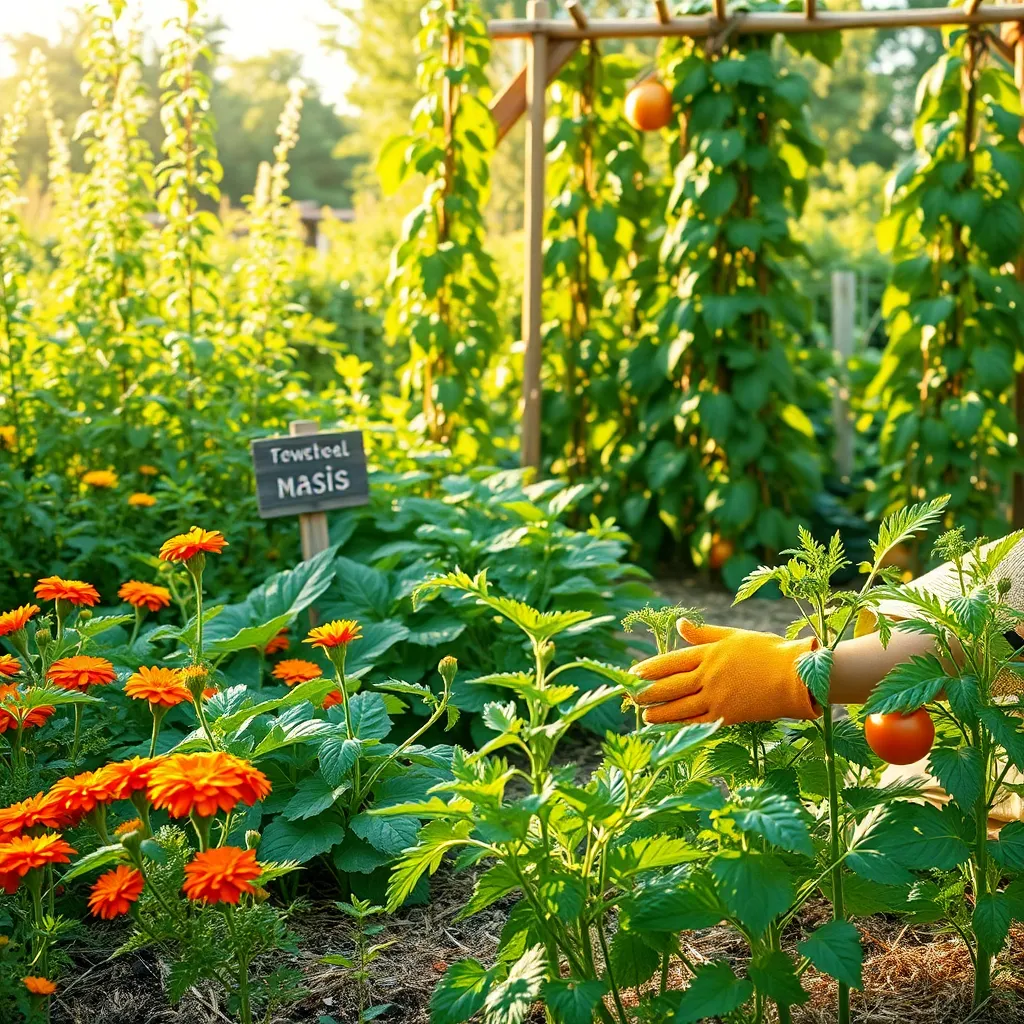
Creating natural barriers in your garden can effectively deter pests without the use of harmful chemicals. One simple method is to plant pest-repelling herbs like mint, basil, and rosemary around the perimeter of your garden. These herbs emit strong scents that many pests find repellent, and they can also enhance the flavor profiles of nearby plants. For best results, plant these herbs in well-drained soil and water them regularly, ensuring they receive at least six hours of sunlight daily.
Companion planting is another excellent strategy to naturally keep pests at bay. By strategically planting certain vegetables and flowers together, you can create a garden environment that confuses and deters pests. For example, marigolds are known to repel nematodes and can be planted alongside tomatoes. Ensure your marigolds are spaced about 8 to 10 inches apart to allow for adequate air circulation, promoting healthy growth.
Physical barriers can also be a highly effective way to protect your plants. Using floating row covers can help keep flying insects like aphids and cabbage moths away from your crops. These covers should be placed over plants immediately after sowing seeds and removed once plants begin to flower to allow for pollination. Make sure the edges are secured to the ground to prevent pests from sneaking underneath.
For a more advanced approach, consider installing raised garden beds with fine mesh netting. This method provides an added layer of protection against both crawling and flying insects. Construct the beds using untreated wood to avoid chemicals leaching into the soil, and cover them with a netting that allows sunlight and rain through but blocks pests. Regularly check the netting for any tears or gaps to maintain its effectiveness over time.
Introduce Beneficial Insects
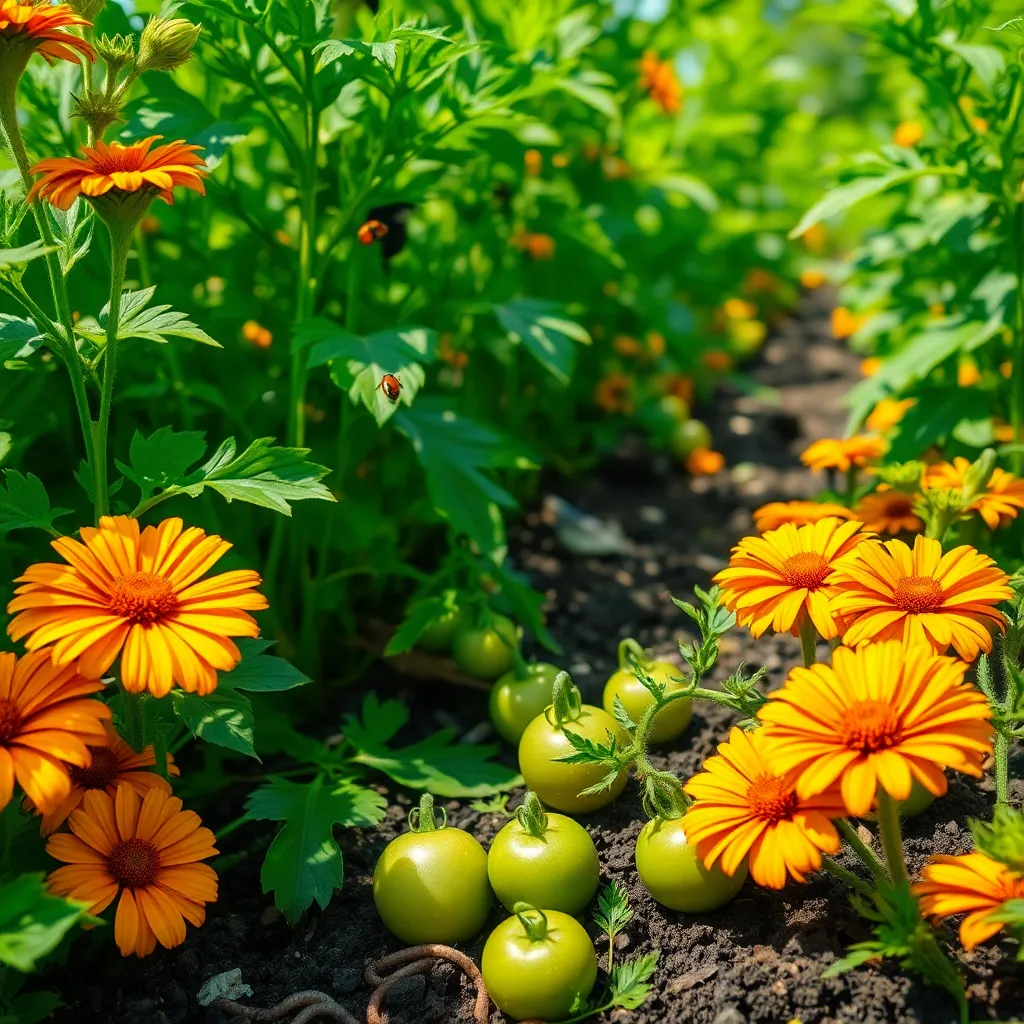
Introducing beneficial insects into your garden can be a game-changer for natural pest control. These helpful allies, such as ladybugs and lacewings, prey on common garden pests like aphids and caterpillars, keeping their populations in check without chemicals.
To attract these beneficial insects, plant a diverse array of flowers that provide nectar and pollen. Flowers like marigolds, sunflowers, and cosmos not only beautify your garden but also serve as food sources for beneficial insects, encouraging them to stay and patrol your plants.
For beginners, consider purchasing ladybugs or lacewing larvae from a garden center to jumpstart their populations. Release them in the evening when temperatures are cooler, and water your garden beforehand to ensure they have a welcoming environment.
Advanced gardeners might explore creating insect habitats or refuges using small piles of rocks or twigs. These shelters provide a safe haven for beneficials, allowing them to thrive and reproduce, thereby amplifying their pest-fighting capabilities.
Apply Organic Pest Remedies

Applying organic pest remedies can be an effective way to control garden pests without harming beneficial insects. One of the simplest solutions is to use a homemade garlic spray, which can be made by blending cloves of garlic with water and a dash of soap, then straining the mixture before use.
Neem oil is another popular organic remedy that can help manage various pests, including aphids and spider mites. Dilute neem oil according to the instructions on the label and apply it to your plants in the early morning or late afternoon to prevent sun damage.
For those dealing with slugs and snails, consider using diatomaceous earth as a natural deterrent. Sprinkle a thin layer around the base of affected plants; the sharp edges of this powder will deter these pests without harming your soil.
To ensure the effectiveness of these remedies, it’s crucial to apply them consistently and monitor your plants regularly for signs of pest activity. Combining these organic methods with the introduction of beneficial insects can create a balanced ecosystem and reduce the likelihood of pest infestations in your garden.
Monitor and Adjust Regularly
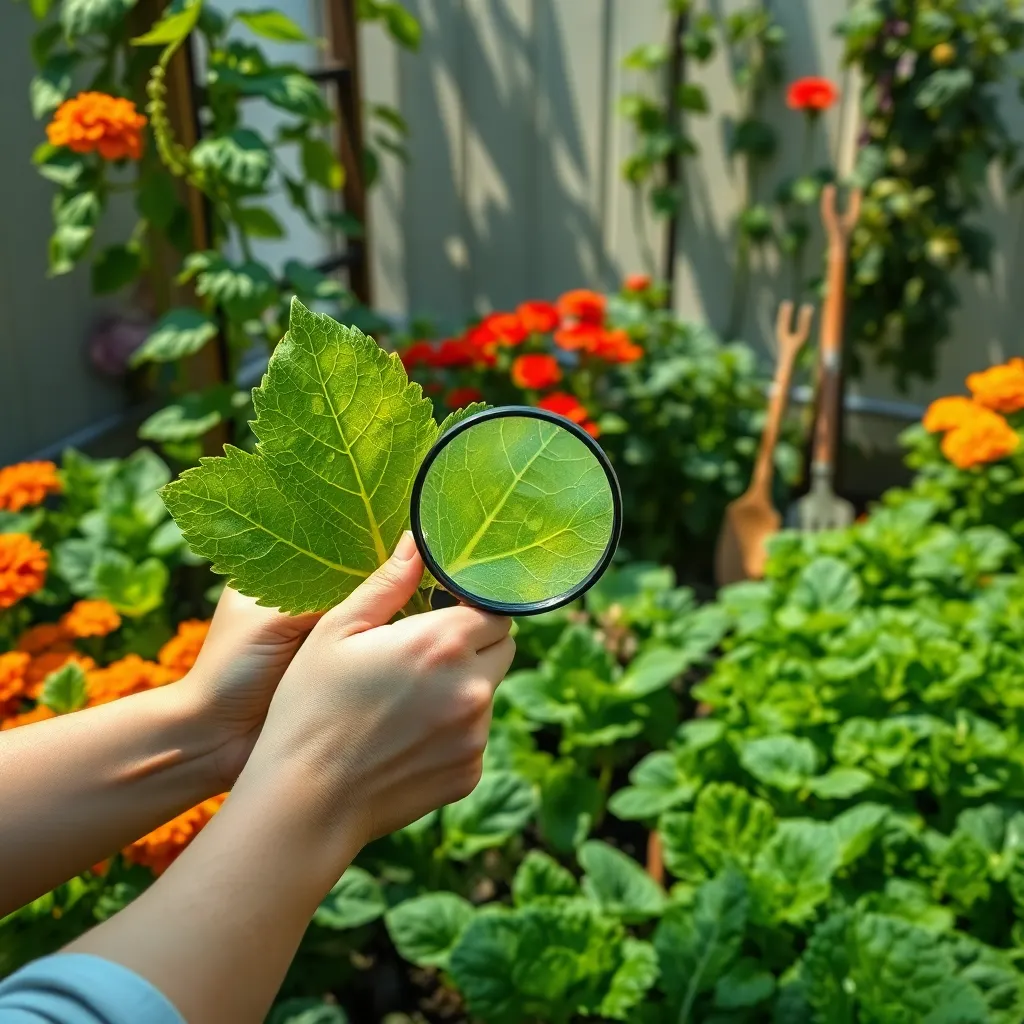
Regular monitoring is essential to keep your garden free of pests. Begin by inspecting your plants at least twice a week, focusing on both the upper and lower sides of leaves where pests often hide.
Pay special attention to any changes in leaf color or texture, as these can be early indicators of pest activity. Use a magnifying glass to look for small insects or eggs that may not be visible to the naked eye.
Adjust watering practices as needed, since both overwatering and underwatering can stress plants, making them more susceptible to pests. Ensure your plants are in well-draining soil and water them early in the morning to allow foliage to dry throughout the day.
For advanced gardeners, consider using companion planting to deter pests naturally. For example, planting marigolds around vegetables can help repel nematodes, while basil can deter flies and mosquitoes.
Keep detailed notes of any pest sightings and the measures taken to control them. This record will help you identify patterns and adjust your pest management strategies effectively over time.
Conclusion: Growing Success with These Plants
In nurturing your garden of relationships, we explored five key concepts: understanding the root causes of conflicts, cultivating open communication, setting healthy boundaries, practicing empathy and support, and committing to continuous growth. By recognizing the underlying issues that give rise to conflicts, you can address them proactively. Open communication ensures a strong foundation of trust, while healthy boundaries protect your relationship’s integrity. Empathy and support foster a nurturing environment where both partners can thrive, and a commitment to growth ensures that your relationship evolves positively over time.
As an immediate next step, take a moment to discuss with your partner one area where you both can improve. This simple action can set the stage for ongoing dialogue and mutual understanding. Save or bookmark this article as a handy reference guide for when you need a relationship boost.
Remember, the journey towards a successful relationship is ongoing and ever-changing, much like tending to a vibrant garden. With dedication and these tools at your disposal, you can cultivate a flourishing partnership. Embrace the opportunity to grow together, and let this article serve as your trusted companion on that journey.

